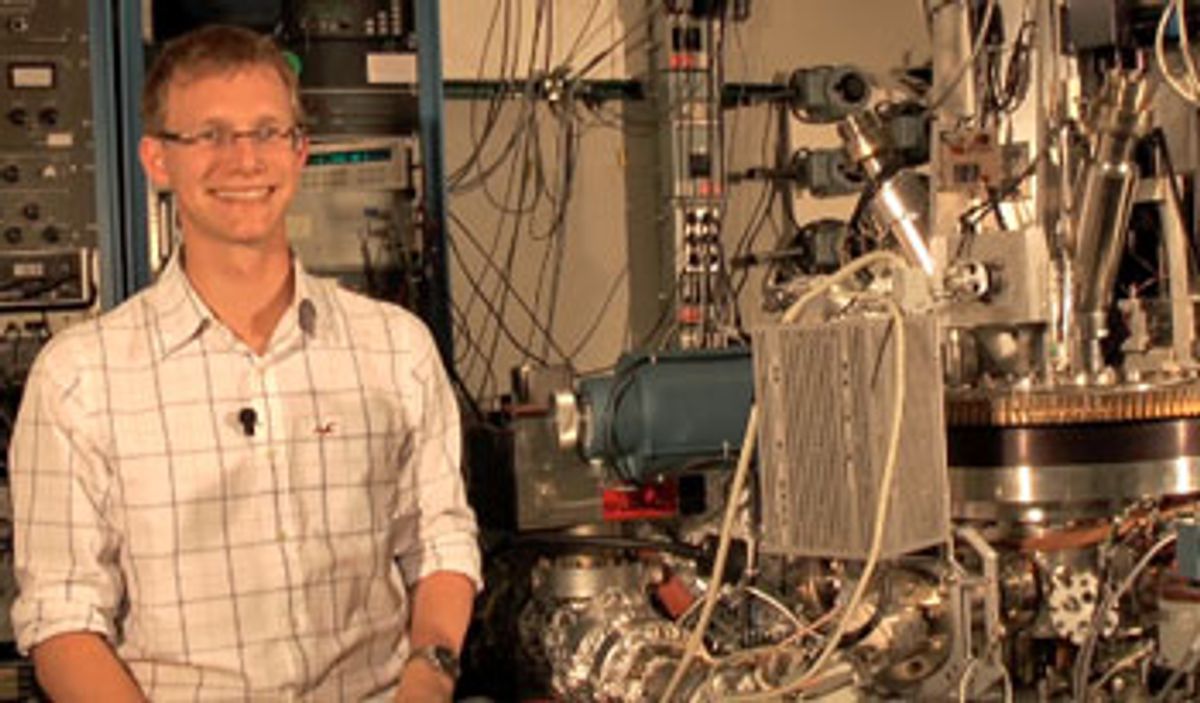Nanotech news is buzzing this week with the announcement that researchers at IBM’s Almaden Research Center have significantly advanced the speed at which a Scanning Tunneling Microscope (STM) can image an atom.
It is now possible to take images of an atom at nanosecond speeds as opposed to mere millisecond speeds. To give you a sense of how big a difference in time this is, think of a millisecond as equivalent to 30 years while a nanosecond would be just one second.
Some see this as a step towards bringing Moore’s law to its inevitable conclusion, i.e. storing information on an individual atom. And, indeed, the researchers’ demonstration of their imaging technique indicated that various manipulations of an atom can dramatically change their ability to store information.
Previously it had been determined that an iron atom could hold data for only a nanosecond. With this technique, the researchers were able to manipulate the iron atom by placing it near non-magnetic copper atoms and found the iron atom could then hold the data for 200 nanoseconds. If they didn’t have this technique they may not have been able to properly observe that phenomenon.
I have to give credit to the IBM researchers for putting this into some perspective. This is a significant advancement in conducting nanoscale research but nobody should be expecting commercial products anytime soon and the IBM researchers try to nip that idea in the bud in published reports.
According to Andreas Heinrich, IBM Research staff member and group leader of nanoscale science at the Almaden Lab, who was interviewed for the eWeek article cited above, “it is far too early to tell if or how this will result in productized technologies. It will probably take another two to five years to determine whether atoms can be manipulated to store data for hours or days, rather than nanoseconds, and even longer—15 years or more—to determine whether any of this research will result in products.”
While this is certainly the circumspect approach to news of this breakthrough, one can understand the enthusiastic reactions to its announcement from some peers. In the same eWeek article, Michael Crommie, professor of physics at the University of California Berkeley and a faculty researcher at the Lawrence Berkeley National Labs, said in a statement. "I am particularly excited by the possibility of generalizing it to other systems, such as photovoltaics, where a combination of high spatial and time resolution will help us to better understand various nanoscale processes important for solar energy, including light absorption and separation of charge."Now if someone can come up with a microscopy tool that excites the biologists as much as the physicists, then we might have universal joy among nanotechnology researchers.
Dexter Johnson is a contributing editor at IEEE Spectrum, with a focus on nanotechnology.




